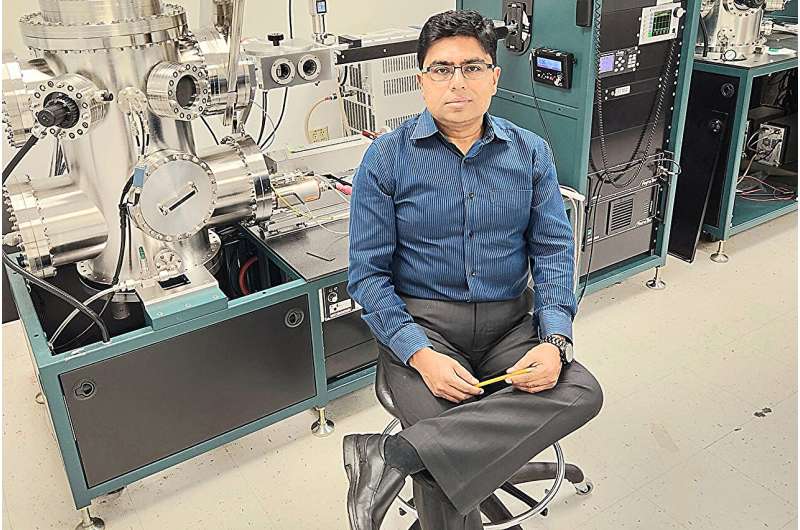New Photon Detection Technique Unveiled by Researcher

December 12, 2023
This article has undergone a comprehensive review in alignment with the editorial guidelines and policies of Science X. The review by the editors included a focus on the following aspects to establish the credibility of the content:
- Fact-checking
- Peer-reviewed publication
- Reliability of the source
- Proofreading
The review was facilitated by the University of Central Florida
Debashis Chanda, a researcher and professor at the NanoScience Technology Center of the University of Central Florida, has made a significant advancement in the realm of photon detection - these elementary particles range from visible light to radio frequencies and are crucial for cellular communication.
This progress could potentially lay the groundwork for improved precision and efficiency in multiple technologies such as medical imaging, communication systems, scientific research, and enhanced security measures.
Historically, photon detection has depended on the change/modulation of voltage or current amplitude. Chanda's much-needed innovation involves detecting photons by modulating an oscillating circuit's frequency. This heralds the arrival of ultra-sensitive photon detection.
Chanda has utilized a unique phase-change material (PCM) in his method, which transforms its form upon contact with light. This results in a steady electrical rhythm, or a stable electrical circuit oscillation. The rhythm's speed alters when hit by a light photon, which impacts the oscillation frequency. The variation in the rhythm intensity relates directly to the strength of the light, quite similar to how a person's voice moderates the radio sound.
The recent publication of these technological strides was made in Advanced Functional Materials.
The significance of Long Wave Infrared (LWIR) detection in the 8 to 12 micrometer wavelength range spans various fields such as astronomy, climate science, materials analysis, and security. Yet achieving LWIR detection at room temperature poses a challenge due to the low energy of photons.
Existing LWIR detectors are bifurcated into cooled and uncooled types, each having its own set of limitations. While cooled detectors possess excellent detectivity, they necessitate cryogenic cooling, making them pricey and restricting their practical use. On the other hand, uncooled detectors, though operational at room temperature, suffer from low detectivity and slow response due to the higher thermal noise intrinsic to room temperature operation.
The lack of low-cost, highly sensitive, rapidly responding infrared detectors/cameras continues to pose issues to scientific and technological advancements. Thus, LWIR cameras are predominantly used in Department of Defense and space-specific applications.
'Contrarily to existing photon detection methods which involve light power changing the amplitude of voltage or current (amplitude modulation—AM), our proposed method allows incidents of photons to modulate an oscillating circuit's frequency. This is then detected as a frequency shift, rendering it inherently resilient to noise, that usually is AM in nature,' affirms Chanda.
Chanda further extols, 'Our FM-based method yields superior results in terms of noise equivalent power, response time, and detectivity at room temperature. This general FM-based photon detection theory can be applied across any spectral range with other phase-change materials.'
Chanda concludes, 'Our findings represent a significant step forward in establishing this unique FM-based detector as an integral part of developing cost-effective, highly efficient, uncooled infrared detectors and imaging systems. Applications range from remote sensing, thermal imaging to medical diagnostics. We are confident of further enhancements with industry-scale packaging.'
Chanda's team's innovative concept signifies a paradigm shift in highly sensitive, uncooled LWIR detection as it is limited by detection sensitivity and promises a path to a game-changing, uncooled LWIR detection system. This system is predicted to have high sensitivity, be cost-effective and can be seamlessly integrated into electronic readout circuitry without any intricate hybridization requirements.
You can find more information in Tianyi Guo et al's publication titled 'Frequency Modulation Based Long‐Wave Infrared Detection and Imaging at Room Temperature,' in Advanced Functional Materials (2023).
The article was provided by the University of Central Florida.




